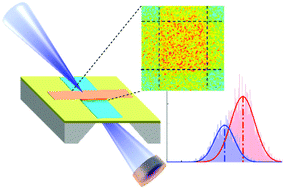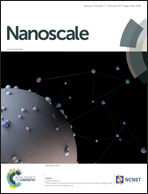Spatially uniform resistance switching of low current, high endurance titanium–niobium-oxide memristors†
Abstract
We analyzed micrometer-scale titanium–niobium-oxide prototype memristors, which exhibited low write-power (<3 μW) and energy (<200 fJ per bit per μm2), low read-power (∼nW), and high endurance (>millions of cycles). To understand their physico-chemical operating mechanisms, we performed in operando synchrotron X-ray transmission nanoscale spectromicroscopy using an ultra-sensitive time-multiplexed technique. We observed only spatially uniform material changes during cell operation, in sharp contrast to the frequently detected formation of a localized conduction channel in transition-metal–oxide memristors. We also associated the response of assigned spectral features distinctly to non-volatile storage (resistance change) and writing of information (application of voltage and Joule heating). These results provide critical insights into high-performance memristors that will aid in device design, scaling and predictive circuit-modeling, all of which are essential for the widespread deployment of successful memristor applications.



 Please wait while we load your content...
Please wait while we load your content...